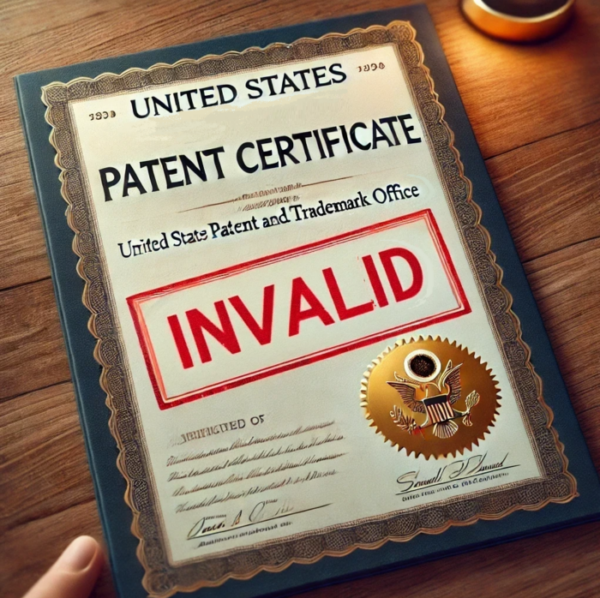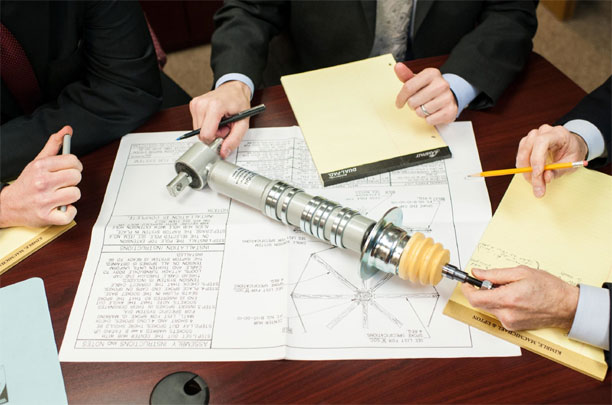
A common misconception in patent law is that a granted patent remains enforceable until its expiration date. However, patents are not invincible; they can be challenged and invalidated at any time if they fail to meet statutory requirements. A patent's enforceability is contingent on its validity, and numerous legal mechanisms exist to scrutinize and potentially invalidate a patent before it reaches the end of its term.
A patent can be invalidated on various grounds, including the existence of prior art, lack of patent-eligible subject matter, and failure to meet statutory requirements. Patent invalidation proceedings can take place in courts, before the Patent Trial and Appeal Board (PTAB), or through post-grant review mechanisms such as inter partes review (IPR). This article provides an in-depth overview of patent invalidity, relevant legal standards, and strategies for conducting an effective patent invalidity search.
Under 35 U.S.C. § 282, a United States patent is presumed valid. The burden of proving invalidity falls on the party challenging the patent, requiring "clear and convincing evidence". Microsoft Corp. v. i4i Ltd. P'ship, 564 U.S. 91 (2011). However, if relevant prior art was not considered by the patent examiner, the burden may be easier to meet.
Patent validity can be challenged on several grounds, including:
Under 35 U.S.C. § 102, a claimed invention is invalid if it was disclosed in prior art before the patent priority date, it lacks novelty and is invalid. Anticipation occurs when a single prior art reference (e.g., a previously existing patent or publication) discloses each and every element of a claimed invention, either explicitly or inherently, before the patent’s effective filing date. If a claimed invention is anticipated, it lacks novelty and is therefore invalid. To establish anticipation, a challenger must show that the prior art reference predates the patent, discloses every element of the claimed invention, and is enabling.
A prior art reference predates the patent if it was publicly available—such as through publication, an issued patent, public use, or sale—before the patent’s effective filing date. Under the America Invents Act (AIA), which applies to patents with an effective filing date on or after March 16, 2013, any disclosure before the filing date qualifies as prior art unless an exception applies. In addition to being prior in time, the reference must disclose every element of the claimed invention, arranged as in the claim. If even a single element is missing, anticipation is not established, though the reference may still serve as evidence of obviousness under § 103.
A well-known case involving public disclosure and anticipation is In re Hall, 781 F.2d 897 (Fed. Cir. 1986), which addressed whether a single prior art reference was publicly accessible before the patent’s priority date. In this case, the patent applicant sought to patent an invention, but the United States Patent and Trademark Office (USPTO) rejected the claims based on an earlier doctoral dissertation that was housed in a university library in Germany. The applicant contested the rejection, arguing that the dissertation was not publicly available in a manner that would qualify it as prior art under § 102. The Federal Circuit ruled that a dissertation cataloged in a university library constituted prior art because it was sufficiently accessible to the public. The court explained that even if a reference is not widely disseminated, it can still be considered publicly available if it is accessible to those skilled in the relevant field who are likely to seek it out.
It should also be noted that the disclosure in the prior art may be explicit or inherent. While explicit disclosure is straightforward, a reference can also anticipate if an element is inherently present—meaning it necessarily exists in the prior art, even if not expressly stated. The test for inherency is whether a person of ordinary skill in the art (POSITA) would recognize the missing element as necessarily present. Finally, the prior art must be enabling, meaning a POSITA could practice the invention based on the disclosure without undue experimentation. If the reference is merely conceptual and lacks sufficient detail, it may not be considered anticipatory.
Under 35 U.S.C. § 103, a patent claim is invalid for obviousness if the differences between the claimed invention and the prior art are such that the invention would have been obvious to a POSITA at the time the invention was made. Unlike anticipation, where a single prior art reference must disclose every element of the claimed invention, obviousness can be established by combining multiple references and/or modifying an existing reference in a way that would have been predictable to a POSITA.
To determine obviousness, courts apply the framework set forth in Graham v. John Deere Co., 383 U.S. 1 (1966), which involves four key factors:
A finding of obviousness does not require an exact blueprint of the claimed invention in the prior art but rather an analysis of whether a POSITA would have been motivated to modify or combine prior art references to arrive at the claimed invention with a reasonable expectation of success. The KSR International Co. v. Teleflex Inc., 550 U.S. 398 (2007) decision reinforced this principle by rejecting rigid application of obviousness tests and emphasizing a more flexible, common-sense approach that considers whether a combination of known techniques was merely an obvious step forward.
Under 35 U.S.C. § 101, an invention must fall within the categories of patent-eligible subject matter—namely, a process, machine, manufacture, or composition of matter—to be patentable. U.S. patent law has long held that certain categories of subject matter, including laws of nature, natural phenomena, and abstract ideas, are not eligible for patent protection because they are fundamental principles that belong to all and cannot be monopolized. This doctrine prevents the patent system from unduly restricting the use of basic scientific and mathematical concepts that are essential for innovation.
To determine whether a claimed invention falls within patent-eligible subject matter, courts apply the two-step test established in Alice Corp. v. CLS Bank International, 573 U.S. 208 (2014):
In applying this framework, courts assess whether an invention is merely a generic implementation of an abstract idea (e.g., on a computer) or whether it introduces a specific technological advance that improves the functioning of a computer or another technical field. For example, a business method that simply automates conventional practices using a general-purpose computer is typically found ineligible, whereas an innovation that improves data processing efficiency or enhances cybersecurity may be eligible.

Under 35 U.S.C. § 112, a patent specification must provide a clear, complete, and precise disclosure of the invention to justify the grant of exclusive rights. This section imposes several distinct requirements: the written description requirement, the enablement requirement, and the definiteness requirement. Failure to satisfy any of these requirements can render a patent invalid or unenforceable.
The written description requirement under § 112(a) ensures that the inventor had possession of the claimed invention at the time of filing. To meet this requirement, the patent must describe the invention in enough detail that a POSITA would recognize that the inventor was in possession of the claimed subject matter.
A lack of sufficient written description can arise when claims are broader than what is disclosed, meaning the inventor is attempting to claim more than what was actually described in the application. This issue frequently occurs in biotechnology and chemical patents, where an applicant may claim a broad genus of compounds without describing enough representative species to show possession of the full scope. Courts analyze whether the specification reasonably conveys to those skilled in the art that the inventor actually invented what is claimed.
The enablement requirement, also under § 112(a), requires the patent to disclose enough information to enable a POSITA to make and use the claimed invention without undue experimentation. This ensures that the public receives the full benefit of the invention in exchange for the patent grant.
A patent fails enablement if the disclosure lacks sufficient guidance, requiring excessive trial and error for a skilled artisan to practice the invention. Courts assess factors such as the predictability of the field, the breadth of the claims, and the amount of experimentation required to determine whether a patent is enabled. The enablement requirement is especially scrutinized in cases involving broad functional claims (e.g., "any compound that treats disease X") when the patent fails to provide adequate working examples or detailed instructions.
Under § 112(b), the definiteness requirement mandates that claims be written in clear and precise terms, ensuring that the boundaries of the patent’s scope are properly defined. This allows competitors to understand what is and is not covered by the patent. Claims that are ambiguous, vague, or subjective (e.g., terms like "efficient," "aesthetically pleasing," or "substantially pure") may be invalidated for indefiniteness.
The Supreme Court in Nautilus Inc. v. Biosig Instruments, Inc., 572 U.S. 898 (2014) set the standard that a patent claim is indefinite if it fails to inform a POSITA, with reasonable certainty, about the scope of the invention. In Nautilus v. Biosig, the Supreme Court ruled that a patent claim using the term "spaced relationship" between two electrodes was indefinite because it did not provide clear objective boundaries. The Court held that claims must provide reasonable certainty and that ambiguous language can lead to invalidity. Courts consider whether a POSITA would have to guess at the meaning of a claim term or whether reasonable interpretations could differ significantly.
Under 35 U.S.C. § 115, a patent application must correctly identify the true inventors of the claimed invention. An inventor is defined as someone who contributes to the conception of at least one claim in the patent. If improper inventorship occurs—either by omitting a true inventor or including someone who did not actually invent—the patent may be challenged for invalidity. However, 35 U.S.C. § 256 provides a mechanism to correct inventorship errors, which can prevent invalidation if the mistake was unintentional and properly remedied. Thus, patent inventorship is a critical issue that should be addressed at the beginning of the patenting process.
A patent invalidity search is performed to identify prior art that can be used to invalidate claims in an issued patent. This search is essential in patent litigation, inter partes review, post-grant review, and patent disputes generally.
Conducting a thorough patent invalidity search requires careful examination of various aspects of the patent. The independent and dependent claims of the patent must be analyzed for their scope based on the plain language of the claims. Independent claims define the broadest scope of the invention and serve as the foundation for dependent claims, which add limitations or modifications. Analyzing these claims is crucial because any invalidity argument must directly challenge the patent’s claimed invention as recited in the claims.
The next step is to review the patent's file wrapper, which contains the complete history of the patent’s prosecution before the USPTO. This record includes the patent examiner's communications, initial claim rejections, amendments made during the application process, and applicant arguments. Examining the file wrapper can provide more clarity on the meaning of the claim terms based on the representations made to the patent examiner by the patentee about the meaning of the claims and how they are distinguishable from previous technologies. It may also uncover weaknesses in the patent, such as concessions made by the patent owner, prior rejections, or inconsistencies in claim language. If the patent examiner overlooked relevant prior art or improperly allowed certain claims, these issues can serve as valuable evidence in an invalidity challenge.
Once the claims have been examined, the effective priority date of the patent claims must be determined. The filing date and the priority chain establish which prior art references can be considered relevant. If a patent claims priority from an earlier patent application, it is essential to assess whether that priority claim is valid and whether it impacts the prior art available for invalidation. The earliest filing date dictates the timeline of prior art searches, ensuring that only documents published before that date are used in the invalidity analysis.
Subsequently, a prior art search is conducted to find public information that predates the patent’s priority date. This involves searching patent databases for granted patents, patent applications, and cited patents, as well as reviewing non-patent literature such as research papers, technical documents, product manuals, and industry publications. The goal is to identify references that disclose the same invention or render it obvious. Various search techniques are used to locate such prior art, including keyword searches, classification searches, and citation analysis.
The uncovered prior art references must be thoroughly analyzed to determine their relevance to the patent's claims. This process involves comparing the prior art with each element of the claims to assess whether it anticipates one or more claims or supports a case of obviousness against the claims. Identifying the closest prior art and establishing how it relates to the claimed invention strengthens an invalidity argument.
The America Invents Act (AIA) introduced Inter Partes Review (IPR) and Post-Grant Review (PGR) as administrative procedures before the Patent Trial and Appeal Board (PTAB) within the USPTO. These reviews, conducted by administrative patent judges, provide a mechanism for challenging the validity of granted patents.
Post-Grant Review (PGR) is an administrative procedure that allows a third party to challenge the validity of a patent before the PTAB that must be filed within nine months of a patent’s issuance and permits challenges based on any ground of invalidity, including patent-eligible subject matter (§ 101), novelty (§ 102), obviousness (§ 103), and written description or enablement deficiencies (§ 112). To initiate PGR, the petitioner must show that it is more likely than not that at least one claim is unpatentable. PGR provides a cost-effective alternative to litigation, though PTAB decisions may be appealed to the Federal Circuit Court of Appeals.
IPR is an administrative procedure that allows a third party to challenge the validity of a patent before the PTAB after nine months from a patent’s issuance or after the Post-Grant Review (PGR) window closes. Unlike PGR, IPR is limited to challenges based on prior patents and printed publications, specifically addressing lack of novelty and obviousness. In contrast, PGR allows for a broader range of invalidity challenges, including those based on patent-eligible subject matter and written description deficiencies. Both proceedings have strict timelines and require a petitioner to demonstrate that the prior art or legal deficiencies more likely than not render the patent claims invalid.
In federal litigation, accused infringers can challenge a patent’s validity as a defense in a patent infringement lawsuit. Invalidity challenges are generally the same as those available in a PGR proceeding. However, litigation allows broader challenges and includes live witness testimony, which is restricted in PTAB proceedings. A court’s final decision on validity takes precedence over administrative rulings. If a patent is found invalid, it cannot be enforced. Appeals go to the Federal Circuit Court of Appeals, which reviews legal and factual determinations.
The Patent Trial and Appeal Board (PTAB) and federal courts may reach differing conclusions, leading to legal uncertainties. The biggest distinction between procedure in PTAB proceedings and federal lawsuits is that invalidity can be shown by a preponderance of the evidence in PTAB proceedings, which is a lower standard than the clear and convincing evidence standard in federal court. Courts generally defer to the PTO's decisions, but final court rulings take precedence.
Patent invalidity plays a central role in intellectual property disputes. Whether challenging or defending a patented invention, understanding prior art, the patent process, and grounds for invalidation is essential. Proper preparation and strategic use of invalidity arguments can determine the outcome of a patent infringement lawsuit, ensuring a fair balance between innovation and competition in the market.
© 2025 Sierra IP Law, PC. The information provided herein does not constitute legal advice, but merely conveys general information that may be beneficial to the public, and should not be viewed as a substitute for legal consultation in a particular case.

"Mark and William are stellar in the capabilities, work ethic, character, knowledge, responsiveness, and quality of work. Hubby and I are incredibly grateful for them as they've done a phenomenal job working tirelessly over a time span of at least five years on a series of patents for hubby. Grateful that Fresno has such amazing patent attorneys! They're second to none and they never disappoint. Thank you, Mark, William, and your entire team!!"
Linda Guzman

Sierra IP Law, PC - Patents, Trademarks & Copyrights
FRESNO
7030 N. Fruit Ave.
Suite 110
Fresno, CA 93711
(559) 436-3800 | phone
BAKERSFIELD
1925 G. Street
Bakersfield, CA 93301
(661) 200-7724 | phone
SAN LUIS OBISPO
956 Walnut Street, 2nd Floor
San Luis Obispo, CA 93401
(805) 275-0943 | phone
SACRAMENTO
180 Promenade Circle, Suite 300
Sacramento, CA 95834
(916) 209-8525 | phone
MODESTO
1300 10th St., Suite F.
Modesto, CA 95345
(209) 286-0069 | phone
SANTA BARBARA
414 Olive Street
Santa Barbara, CA 93101
(805) 275-0943 | phone
SAN MATEO
1650 Borel Place, Suite 216
San Mateo, CA, CA 94402
(650) 398-1644. | phone
STOCKTON
110 N. San Joaquin St., 2nd Floor
Stockton, CA 95202
(209) 286-0069 | phone
PORTLAND
425 NW 10th Ave., Suite 200
Portland, OR 97209
(503) 343-9983 | phone
TACOMA
1201 Pacific Avenue, Suite 600
Tacoma, WA 98402
(253) 345-1545 | phone
KENNEWICK
1030 N Center Pkwy Suite N196
Kennewick, WA 99336
(509) 255-3442 | phone
2023 Sierra IP Law, PC - Patents, Trademarks & Copyrights - All Rights Reserved - Sitemap Privacy Lawyer Fresno, CA - Trademark Lawyer Modesto CA - Patent Lawyer Bakersfield, CA - Trademark Lawyer Bakersfield, CA - Patent Lawyer San Luis Obispo, CA - Trademark Lawyer San Luis Obispo, CA - Trademark Infringement Lawyer Tacoma WA - Internet Lawyer Bakersfield, CA - Trademark Lawyer Sacramento, CA - Patent Lawyer Sacramento, CA - Trademark Infringement Lawyer Sacrament CA - Patent Lawyer Tacoma WA - Intellectual Property Lawyer Tacoma WA - Trademark lawyer Tacoma WA - Portland Patent Attorney - Santa Barbara Patent Attorney - Santa Barbara Trademark Attorney